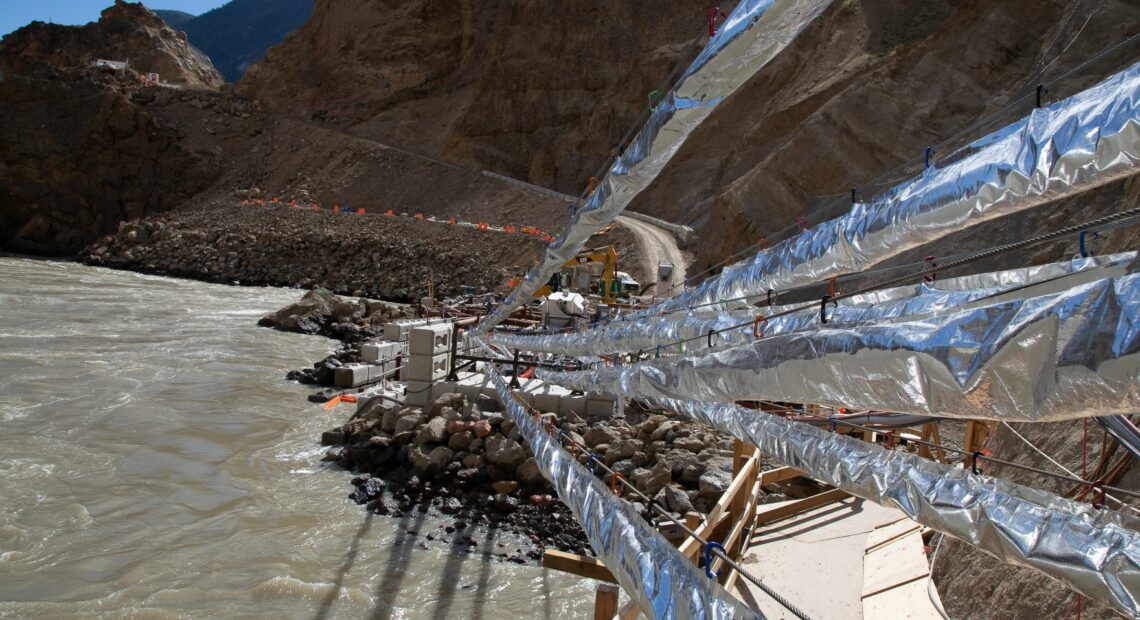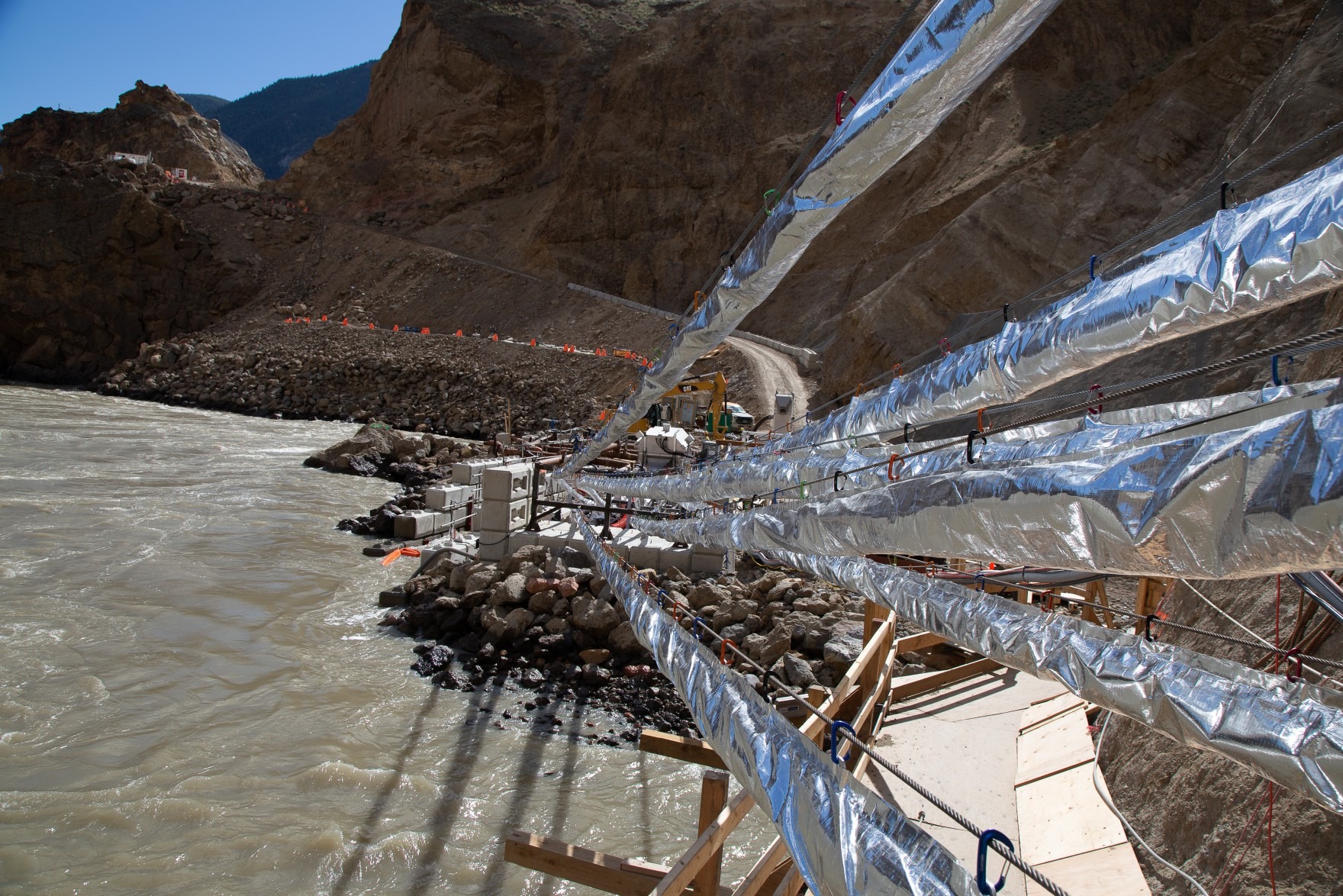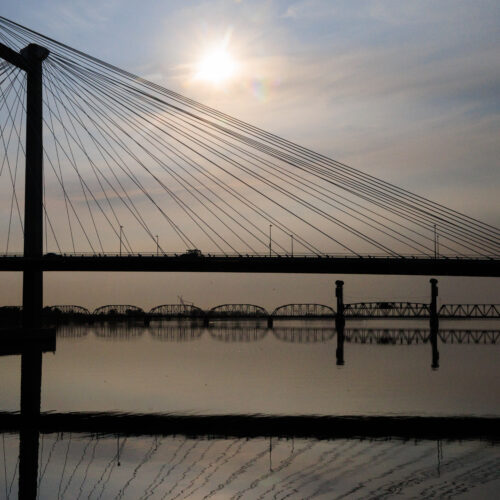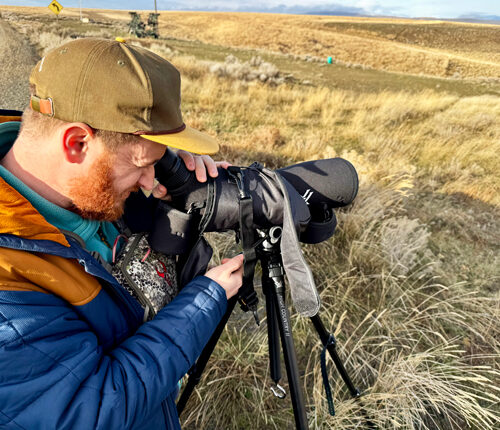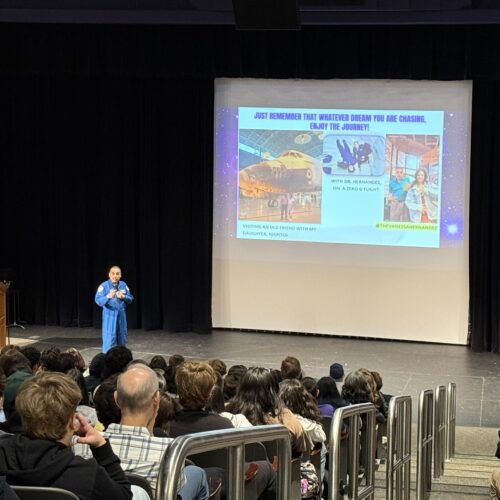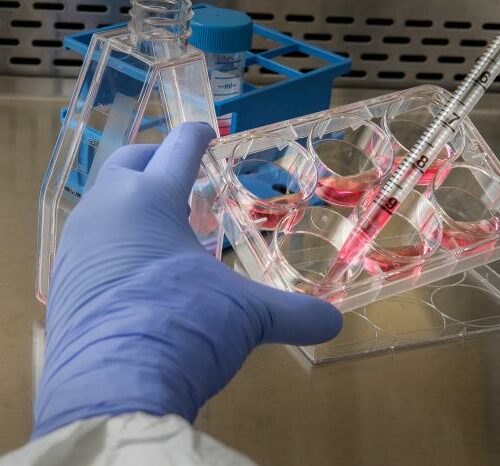One Northwest company thinks it may have a better way to help adult salmon make it up and over the Snake River dams.
Yes, you read that right – over the roughly 100-foot-tall dams.
Whooshh Innovations has deployed its fish passage technology at dams and other obstructions on rivers around the world from the United States to Canada to Norway.
Company officials have met with federal agencies and have presented a draft proposal to lawmakers. Moreover, company officials said, this innovation could generate $60 million over 10 years by diverting water from fish ladders to hydropower turbines.
This could be the largest project for the company, said Whooshh Innovations CEO Vince Bryan. It could potentially replace the six fish ladders on the Lower Snake River to help adult salmon reach spawning grounds, Bryan said.
“The issue that we’ve been working on for the past 10 years was exactly this issue: How to get the fish through the river system more quickly,” Bryan said.
However, Noe Gonzalez, a spokesperson for the U.S. Army Corps of Engineers, said overall, the adult fish ladders on the Lower Snake work well. The fish ladders were built with the dams and have had few modifications since they were constructed. Most recently, a cooling system was installed at the Little Goose and Lower Granite dams, the last two dams on the Lower Snake.
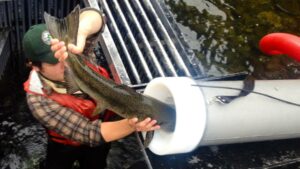
Washington Department of Fish and Wildlife crews load a 30-pound fall chinook salmon into a demonstration of the salmon cannon. SOURCE: Courtney Flatt
The first device by Whooshh Innovations grabbed headlines during early days of testing with an explosive nickname: the salmon cannon. The flexible plastic tube doesn’t exactly shoot salmon in the air. It’s more like the ultimate slip and slide, said former Whooshh Innovations president Tom Shearer in an earlier interview with Northwest Public Broadcasting.
‘No stress’
The white flexible tube is misted with water. The pressure inside makes the salmon feel like they’re still in the river, Bryan said. At earlier demonstration projects, shadows of the fish can be seen moving their tails because they feel like they’re swimming through the tubes.
“The fish are literally gliding in the tube,” Bryan said. “We mist inside the tube, so they are exchanging oxygen. There’s no stress levels – they’re not in a panic.”
He said the pressure differential inside the tubes makes the fish feel like they’re in 30 inches of water.
“When they exit, then they just continue on. They just swim,” Bryan said.
A study with the Columbia River Inter-Tribal Fish Commission has shown some fish made it to the next dam faster than fish that went up the traditional ladders. That’s because they have used less energy in the tubes than in the fish ladders, Bryan said.
This Snake River proposal, Bryan said, improves upon the salmon cannon, which was initially designed to sort Northwest apples without bruising them.
A big difference in the newer technology is how the fish enter the system. People have to place fish into the salmon cannon. This newer device, which the company has dubbed the Passage Portal, is fully automated. The portal system will use water flow to attract fish, taking in cooler water from deeper in the water column.
The system is mounted onto a floating structure. That structure allows it to move where the fish are swimming, Bryan said.
“You place the entry where the fish want to be,” Bryan said.
Scanning fish
Another big advantage of the portal, Bryan said, is it can scan fish and identify which ones should be transported over the dams. That can help to keep out non-native species, such as shad, he said.
The Lower Snake River is about as far inland as shad swim, according to the Northwest Power and Conservation Council, an advisory group that develops a regional power plan and fish and wildlife program. Most of the annual run spawns downstream of McNary Dam on the Columbia River. The Columbia River now has the largest known population of shad in the world, according to the U.S. Geological Survey. The shad could increase competition for space and cause migratory delays. More study is needed, according to the USGS.
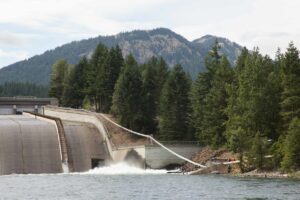
A Whooshh Innovations fish passage system moves fish around Cle Elum dam. SOURCE: Whooshh Innovations
On the Snake River, U.S. Army Corps of Engineers fish biologists said shad can cause problems, most often after they spawn and die. The dead fish can clog areas near fish ladders, although biologists said they don’t affect salmon passage in the ladders.
Bryan said the Passage Portal system could sort shad without people handling the fish. The system takes 18 photos of each fish less than a second after it has swum into the system. The pictures determine the species of fish, whether it’s injured, or if it’s a hatchery or wild fish.
All of that data can help track the success of the system, Bryan said.
Fish that managers want to continue on then swim into the tubes without realizing they’ve left the river, Bryan said.
“Once the fish enters our system, they’re going to be delivered to the top of the dam and into the water in seconds,” Bryan said.
This could make salmon feel like they have a more natural swim upriver to spawn, Bryan said.
Helping fish now
This proposal isn’t meant to replace discussion on whether to remove or alter the four controversial dams on the Lower Snake, he said. It’s more of a Band-Aid to help fish now, he said, while other plans are considered.
Those discussions, Bryan said, could take years to start to help salmon. A comprehensive $33.5 billion proposal by Rep. Mike Simpson, R-Idaho, to remove the Snake River dams could take 10 years.
“What can we do in those 10 years to make sure that there’s any fish left?” Bryan said.
Bryan estimated his company’s device could cost $67 million.
Bryan said the technology has been proven. Last year, the Passage Portal system helped salmon navigate giant boulders in a remote part of British Columbia.
A massive landslide had blocked the Fraser River, with enough debris to fill 45 Olympic-size swimming pools, and prevented fish passage upstream.
To help fix the problem, according to Canada’s Fisheries and Oceans department, it awarded the Whooshh Passage Portal system a $4.45 million contract. The system moved about 8,200 salmon past the landslide.
“The technology worked well at moving fish efficiently past the barrier without handling, therefore reducing stress to fish,” said spokesperson Kavitha Palanisamy. “However, due to the very remote location; challenging weather conditions, including high water levels that disrupted operations; and construction difficulties, fish were not moved as far above the slide site as intended.”
Other emergency transportation measures included a concrete fish ladder, a fish wheel to capture salmon, and a truck and transport system. In total, more than 161,000 salmon made it beyond the debris.
The Fraser River project was smaller in scale than what the company has proposed for all the Snake River dams, Bryan said. But, he said, it was technically more complicated because of the remote location of the landslide and emergency situation.
“Compared to what we did on the Fraser River, every project we look at now seems so straightforward,” Bryan said.
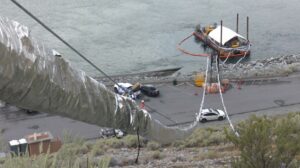
A demonstration project at Chief Joseph dam moved salmon over the dam. The dam has blocked the area to fish since it was built in the 1950s. SOURCE: Whooshh Innovations
For example, in 2019 the Confederated Tribes of the Colville Reservation, with other state and federal agencies, demonstrated the same portal system at Chief Joseph Dam on the Columbia River. Fish haven’t been able to make it around the dam since it was built in the 1950s.
To bring salmon back to the blocked area, the Upper Columbia United Tribes are studying salmon reintroduction to the Upper Columbia River. The tribes have said one solution could be a Whooshh system. Other options could include trucking salmon around Chief Joseph and Grand Coulee dams.
While the Lower Snake River fish ladders have helped fish move upstream, more needs to be done, Bryan said, especially as the climate warms waters and decreases water flows, making it harder on salmon to reach their spawning grounds.
“The fish ladders aren’t enough,” Bryan said. “At least when you have multiple dams in a row.”
Bryan said Whooshh Innovations could get a system up and running on the Snake River by 2023.

